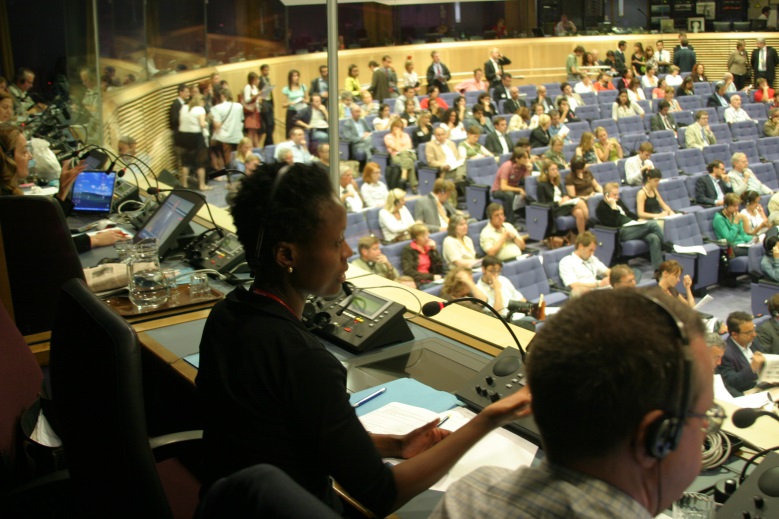What is simultaneous interpreting? What does it entail?
Simultaneous interpreting

This is a very brief description of simultaneous interpreting for the non-initiated, and does not claim to cover everything. There are a large number of books that have been written on the subject, where much more detailed information can be found.
Simultaneous interpreting is a mode of interpreting in which the speaker makes a speech and the interpreter reformulates the speech into a language his audience understands at the same time (or simultaneously). Simultaneous interpreters work in an interpreting booth (though they may also be using a bidule (portable interpretation equipment without a booth) or whispering (chuchotage).
All of the skills mentioned under consecutive interpreting apply to simultaneous.
The three main actions are also essentially the same:
1) listen actively (understand)
2) analyse (structure the message)
3) reproduce (communicate)
The difference with consecutive interpreting is that in simultaneous interpreting all of these things need to happen at the same time (or simultaneously).
This means that besides the skills listed under consecutive interpreting – i.e. a special way of listening, prioritising information and distinguishing between primary and secondary information, activating short-term memory, communicating, etc. – a good simultaneous interpreter also has to be able to anticipate what the speaker might say (especially when the language spoken by the speaker has a very different syntactical structure to the one it is being interpreted into). The ability to remain calm under pressure, and be resilient to stress is even more necessary in simultaneous as well.
The active language of the interpreter is also under more pressure in simultaneous, as he is speaking at the same time as listening and analysing. So the need for excellent mother-tongue or active language skills is even keener here than in consecutive as well. The possibility of 'interference' from the passive (heard) language to the active (spoken) language is also greater in simultaneous, so interpreters have to pay even more attention to their output. This might mean getting away from the original syntax, chopping up long sentences into short ones and avoiding 'false friends'.
This explains why trainee interpreters learn consecutive interpreting first, as that is where they learn the key skills necessary for interpreting. Simultaneous interpreting uses the exact same skills but with some added layers of complexity and difficulty.
All of these different skills need to be learnt. You are not an interpreter just because you happen to speak more than one language; it is much more complex than that. There are a large number of universities that offer courses in conference interpreting.
For simultaneous interpreting there are a good number of resources listed (non-exhaustive) on this platform as well:
Speech Repository (for practice speeches)
DG Interpretation training material
